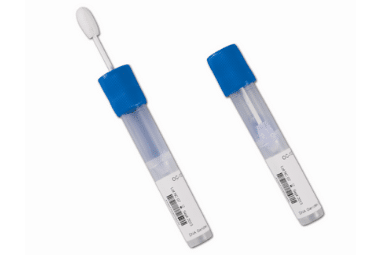Saliva Based COVID-19 Testing
As the number of coronavirus infection keeps climbing, especially in the US, there is a dire need to have a large-scale and accurate diagnostic test to prevent further spread. With the holiday season coming up, the infection rate is expected to spike as people are traveling and gathering for the holidays. Therefore, rapid and mass testing is critical to trace the spread of the virus, especially in the case of asymptomatic individuals. Presently, healthcare providers rely heavily on the PCR nasopharyngeal swab test, which is the current gold standard for COVID-19 diagnosis. However, the discomfort of the procedure, risk to healthcare workers, and cost for these nasal swabs make it harder to implement mass testing. Nasal swabs are usually unpleasant for the patient and need to be performed by trained health workers, which puts them at risk of infection and adds costs to equip them with protective gear. Hence, researchers and scientists are developing simpler alternatives to these nasal swabs. A saliva-based test is the product of this research.
Researchers at Yale University began developing saliva-based COVID-19 testing a couple of months ago and received emergency use authorization from the FDA in August. This test is designed with the purpose of enabling self-conducted sample collection. People just need to expectorate into a test tube at the collection site, or even at home, and then seal and send the sample to the lab without requiring the aid of a healthcare worker. The science behind this test is similar to nasal swabs. This saliva-based test also utilizes polymerase chain reaction (PCR) technology to amplify and detect small amounts of viral genetic material. However, researchers at Yale University decided to simplify the process by eliminating the viral RNA extraction step in an effort to cut costs and reduce processing time. By removing the RNA extraction step, which separates the targeted viral RNA from other substances that may complicate detection, the test will be less sensitive than a regular PCR nasal swab. Still, it will be a lot cheaper and faster. Yale University claimed that the trade-off did not compromise the value of the test. In addition, their procedure also does not require viral transport media (VTM), which consists of chemicals used to stabilize the samples after collection. With no swab, no healthcare workers, no RNA extraction kit, and no VTM, saliva-based testing can be a game-changer to produce a low-cost and fast COVID-19 diagnosis test.
However, there is still some skepticism towards these tests as saliva is not a traditional diagnostic fluid. Scientists generally think that nasal swabs are more accurate than the saliva test. Some studies also suggest that the saliva-based test was less sensitive than nasopharyngeal swabs, especially in a low viral load sample. This result is expected due to the elimination of the RNA extraction step. Despite the lower sensitivity, the saliva test still has credibility in determining infectious patients, as nasal swabs often still detect the virus in a patient that may no longer be infectious. Currently, tens of thousands of saliva tests are conducted daily, especially in university students. In the US, the NBA and NFL sports organizations are also interested in this promising new test.
In the end, PCR is still the backbone of both the gold standard nasal swab and the emerging saliva-based test. This technology is essential in accurately detecting the viral load in a small amount of sample. Demand for PCR kits has been skyrocketing during the pandemic, both for research and diagnostic purposes. SDi’s Global Laboratory Consumables 2020 report analyzes this phenomenon through market estimates, vendor shares, and forecasts segmented by product type, region, end market, and application.



